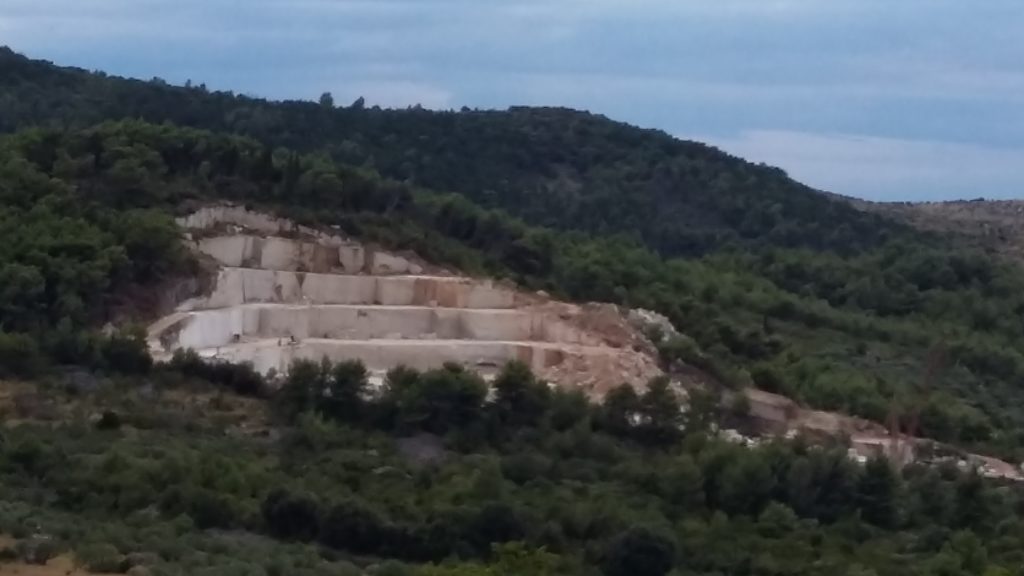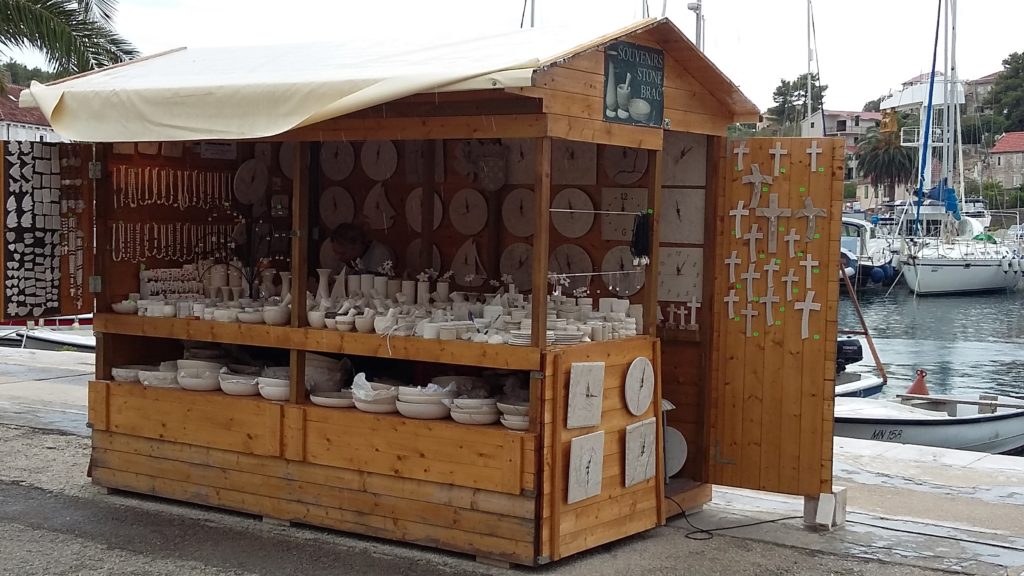 You never know when a marketing or business thought is going to arise. They’ve been popping up frequently and often during my two week teaching stint in Split (Croatia).
You never know when a marketing or business thought is going to arise. They’ve been popping up frequently and often during my two week teaching stint in Split (Croatia).
On the middle weekend I hopped on a ferry operated by Jadrolinja and visited the island of Brac. It’s the largest of the islands that can be easily reached by ferry from Split.
Like much of Croatia, Brac is composed of karst limestone and is especially renowned for it’s lovely white limestone that’s quarried near Pucisca. In the 4th century it was shipped across to Split to build the palace of the Roman Emperor Diocletian – which is an amazing place to wander around. In the 20th century it was used for the columns of the White House.
Local craftsmen use the limestone to make bowls, vases, clocks, jewellry – mainly for the tourist industry. Some of the bowls were really beautiful but with European airlines being so strict on the weight of hand luggage and checked baggage buying such heavy items as a souvenir is not really possible. I made this comment to several stall holders and they confirmed that this was an issue for their business

So this is where the business thought came into my head.
There I was in Brac where limestone bowls are so heavy that tourists aren’t buying them so often. The week before I’d been teaching in Prague and learned that the City council had voted in May 2016 to ban segways from the tourist areas of the city as there’d been so many accidents and complaints. This of course was really bad news for the companies offering tours of the city on segways.
For years I’ve stressed to my students and clients the importance of examining the external environment of their business. Often they yawn – there she goes again. But it’s crucial to be aware of the opportunities and of the threats and you can only know these if you routinely monitor the environment in which your company does or will operate. (For those of you who have studied business I’m referring to the PESTEL analysis).
So here’s some questions for you .. how can a company predict the future – for example the limestone carvers and the reduced luggage allowance on flights and the ban on segways tours in Prague? How can a company be flexible and not reliant on one source of income or one type of customers?





Comments on this entry are closed.
Will there ever be one right way to ensure your position on the market or that you are not too dependent on the external business environment?. As of today, rules – both of business and of society, are switching so fast that an external environment analysis is outdated even before you have worked it out. So, how to deal with this?
For businesses with big muscles, analytics of big data on customer behaviour and the external environment will make them able to make inferences of how the market develops and be on the front end. In this way they can be very agile, despite their size – developing products even before their customers are aware of their need for them. Businesses are able to identify and target new segments of customers almost instantly because of the analytics, based on big data from both own sources, but also secondary data from facebook, instagram, and all sorts of others.
But what about the local limestone carvers or the segway-tours?. They dont have the political influence to work the policies or the analytical framework to make inferences on the future. How can they adapt?
Obviously some business ideas are not ment to last forever. Either because the products itself need innovation, or because the external environment closes it down. In my opinion one cannot develop a business model where you are immune to these changes. The most important is to acknowledge this, and be able to see when your business are not sustainable anymore. Change your products or services so they fit into the new reality – or close the business down, until you get the next great idea.
A good idea for small businesses to not fall behind the market development could be to make use of co-creation: Openly let your weaknesses be seen, and invite the customers to join in with ideas to solve them. Make them feel they are a part of tomething and give them incentives for joining in. Can they get a percentage of what their ideas generate for the business? Can they be acknowledged in any way (social medias, recommendations etc.)
Which employer wouldn’t love to hire an employee with several recommendations from foreign merchants, limestone-carvers or seaway-tours who have benefited from their innovative mindset?. This would be the ultimate employability-stamp on anyones head. Making a win-win situation for all parties.
But is this a bulletproof plan, or even close? .. I dont think so. My point is just to think out of the box. To dare to do what others dont.
Revaling your weaknesses can be your death in business, but if you handle it right – it could might as well be your way to be the survival of the fittest! 🙂 – “Who never dares, never wins”.
Thomas – your insights are powerful and I agree with you. Like I aid when we met in Split – you should be in marketing ! Having said that HR does have a marketing element – both externally and internally.